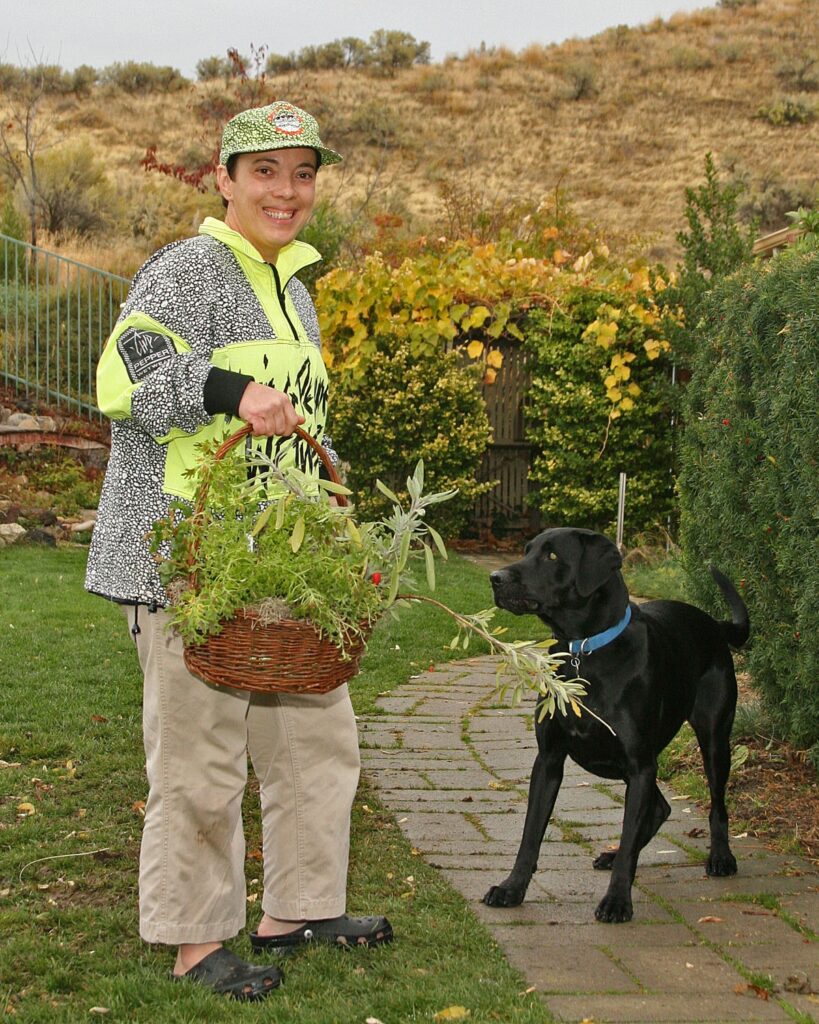Hello Spring. Everywhere I look, nature is in bloom! While you’re gardening this year, whether for beautiful flowers or bountiful beds for kitchen use, consider planting a few seeds for the benefit of the estate chef and your principals’ pets as well.

Let me introduce myself. I am Joanie Veage. A seasoned Private Service Professional House Manager who provides for my principals, bespoke meal service, and natural pet care for their dogs. A few cats here and there. I wrote this article to share with you the sustainable growth practices, organic gardening, and lawn care, that I prefer for my principal’s landscape using healthy soils that bring many benefits to themselves and their pets. These practices also keep our environment and waterways healthy. Good, clean healthy food begins with good, clean healthy soil. By using natural organic fertilizers and nitrogen sources we can have more control over the food we eat at home. An organic culinary landscape is naturally resistant to disease and insect pests. It also contributes to the long-term health of the soil that feeds the food we grow and eat, while avoiding pollution from synthetic chemical fertilizers, herbicides, pesticides, and fungicides. An organic garden boasts much fewer toxic metals and nitrates, and a higher concentration of essential trace minerals in your produce.
Organic lawn care promotes faster degradation of pet waste and reduces those unsightly yellow or brown urine spots in the grass. Organic lawn care can magically slow grass growth and reduce watering needs by up to 50%. These benefits translate to less mowing, thus fewer pollutants from lawn mower and trimmer engines. Conventional lawn chemicals can be tracked into your home on the paws of pets and the feet of people. These chemicals, in addition being irritating to the skin, are known to promote some cancers, aggravate allergies and weaken our immune systems. With an organically grown and cared-for lawn, your principals and their four-legged family can enjoy playtime and sun-bathing on a cool green carpet, with peace of mind.
There are many educational resources and practical classes available at your local garden centers and nurseries that make learning organic food production fun and easy. From beautiful visual landscapes to your culinary gardens, indoors or outdoors, or balcony garden. Container planting or acreage, you too can go green.
Of the many beneficial, nutrient-dense, and antioxidant-rich foods that your principals’ pets can enjoy this season. And many for the chef. I recommend:
Grasses, Sprouts and Vegetables
Edible cereal grasses that are beneficial for their vital nutrients, minerals, and roughage to aid in healthy digestion, as well as clean breath from the chlorophyll. Small amounts may be finely chopped and sprinkled on your pet’s food or juiced for yourself. You should be aware that seasonally and geographically, some grasses produce more pollen than others. “Pet grass” like barley grass and wheat grass, are preferred because of their low pollen and mold spore counts. You can find a blended, organic pet grass seed at some pet food shops and garden centers.
Many seeds can be sprouted: alfalfa, mung bean, red clover, broccoli, lentils, oats, arugula, radish, and so on. You can buy seed sprout mixes especially for dogs, at https://sproutpeople.org
Vegetable choices include fresh grated carrots, beets and zucchini as well as chopped yellow, green, and red peppers. Dogs and humans alike especially love cooked spaghetti squash and other hard shell, winter varieties like pumpkin – these are also good for digestion and preventing enlarged anal glands. Try offering these foods, as well as steamed broccoli and cauliflower, green beans, and peas. Cats might like some grated or minced cucumber, and of course, fresh catnip leaves.
Limit raw vegetables with high oxalic acid content like spinach, swiss chard and rhubarb, as it inhibits calcium absorption.
Some pets do well with white and red potatoes, but other pets have trouble digesting them. Sweet potatoes and yams tend to be a better choice.
Herbs
There are many beneficial herbs that can add taste and variety and possess mild medicinal qualities if added in small amounts to you and your pet’s foods: parsley, thyme, oregano, raspberry or blackberry leaves, basil, and fenugreek. I recommend before adding herbs to your pets’ food, that you know their sensitivities and allergies, and understand the potency and methods of herbal medicine first. A well-known authority in herbal medicine, known as “Juliette of The Herbs” (Juliette De Bairacli Levy, 1912 – 2009) wrote The Complete Herbal Handbook for the Dog and Cat, and The Complete Herbal Handbook for Farm and Stable. Another wonderfully inspiring educator is Rosemary Gladstar whom you can learn about at www.sagemountain.com
Foods possess much more than just vitamins, minerals, protein, starch, and fiber. They also have thermal qualities, energetic properties, can be moistening or drying, move the body’s energy in different directions, and support different organs in various ways. Using food as medicine is a long-held tradition in many cultures. For more information on the energetics of food and Chinese Food Therapy for animals, read Four Paws Five Directions by Cheryl Schwartz, DVM.
A great reference book for your family is Healing with Whole Foods by Paul Pitchford.
And before I forget…… While I would say Mother Nature has been good to us so far, this early spring, don’t be surprised when it starts raining cats and dogs.
Best,
Joanie Veage
Check out my recipe for all-natural dog treats: Amy’s Got Crackers // Love and Gratitude in a Treat









